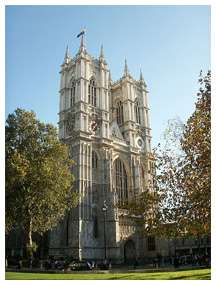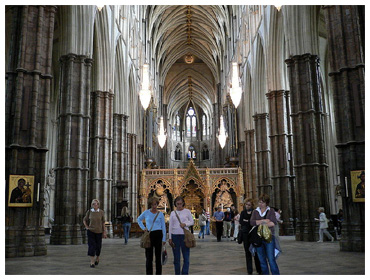 The pomp and circumstance surrounding the royal wedding last week were magnified by the scale and construction of Westminster Abbey, a building that has stood for over 700 years at a location which has been a Christian worship site for over 1000 years.
The pomp and circumstance surrounding the royal wedding last week were magnified by the scale and construction of Westminster Abbey, a building that has stood for over 700 years at a location which has been a Christian worship site for over 1000 years.
My first visit, over 25 years ago, seared into my mind the import of the building, the flying buttresses and the lightness of the structure created by the three Master Masons who designed and built it.
Even though I had studied Westminster as a student in architecture school, I was hardly prepared for my first visit. The height of the nave was a number to me until I craned my neck to look up at how high it really was – 102 feet, the height of a 10 story modern building. I was awestruck, probably more so by the fact that I had flown overnight on my first overseas trip from Houston. I was on my way to Saudi Arabia to work on the master plan for the University of Petroleum and Minerals (Now the King Abdul Aziz University in Dhahran), and had stopped for the day to see the Abbey and several other sites in London. Today, after numerous visits, I still stand in awe of the Kings, Queens and Abbots who brought the Master Masons to the site to build a church that would last for hundreds of years.
Westminster Abbey’s website gives more detail about the history:
“Westminster Abbey is steeped in more than a thousand years of history. Benedictine monks first came to this site in the middle of the tenth century, establishing a tradition of daily worship which continues to this day.
The Abbey has been the coronation church since 1066 and is the final resting place of seventeen monarchs.
The present church, begun by Henry III in 1245, is one of the most important Gothic buildings in the country, with the medieval shrine of an Anglo-Saxon saint still at its heart.” The website also provides detail about the architecture of the structure:
The website also provides detail about the architecture of the structure:
“The present building dates mainly from the reign of King Henry III. In 1245 he pulled down the eastern part of the 11th century Abbey, which had been founded by King Edward the Confessor and dedicated in 1065. Earlier in Henry's reign, on 16 May 1220, he had laid the foundation stone for a new Lady Chapel at the east end of the Confessor's church, but as the Abbey's own financial resources were not sufficient to continue the rebuilding of the whole church at this time no other work was carried out.
It is said that Henry's devotion to St Edward later prompted him to build a more magnificent church in the newest Gothic style, and also to provide a new shrine for the Saint, near to whom Henry himself could be buried. The three master masons supervising the work were Henry of Reyns, John of Gloucester and Robert of Beverley. It is not known if Henry was English or French but the architect was greatly influenced by the new cathedrals at Reims, Amiens and Chartres, borrowing the ideas of an apse with radiating chapels and using the characteristic Gothic features of pointed arches, ribbed vaulting, rose windows and flying buttresses. The design is based on the continental system of geometrical proportion, but its English features include single rather than double aisles and a long nave with wide projecting transepts. The Abbey has the highest Gothic vault in England (nearly 102 feet) and it was made to seem higher by making the aisles narrow. The Englishness is also apparent in the elaborate mouldings of the main arches, the lavish use of polished Purbeck marble for the columns and the overall sculptural decoration. The east-west axis was determined by the existing position of the Lady Chapel.”
Once again I am certain that great structures designed and built by master craftsmen shape the lives of all of us who live, work, play and learn in and around them. That was brought home to me again last week during the latest installment of royal events in Westminster.
Photos courtesy Wikipedia
A Royal Wedding, but a Magnificent Building Too!
by Jim Kollaer | May 02, 2011



Comments
Additional Note:
A new application has been created for the Android, iPhone and iPad called Abbey 3D, which gives users a 3D tour of the building. Proceeds from the sale of the app will be split equally between the Prince William and Miss Catherine Middleton Charitable Gift Fund and Westminster Abbey Foundation, which is responsible for the care and upkeep of the Abbey.
-Construction Citizen
Westminster Abby
This is exactly why I wanted to watch the wedding. I kept looking around the people to see the beautiful
church/building. I can not imagine someone having the idea and vision to build a structure with such detail .
The other thing that took me back is the fact it looks like it was built yesterday. To give us an idea, at least the
ones of us that haven't had a chance to go and visit London, the trees were to be 20' tall and they looked small.
Thank you for another look.
Add new comment